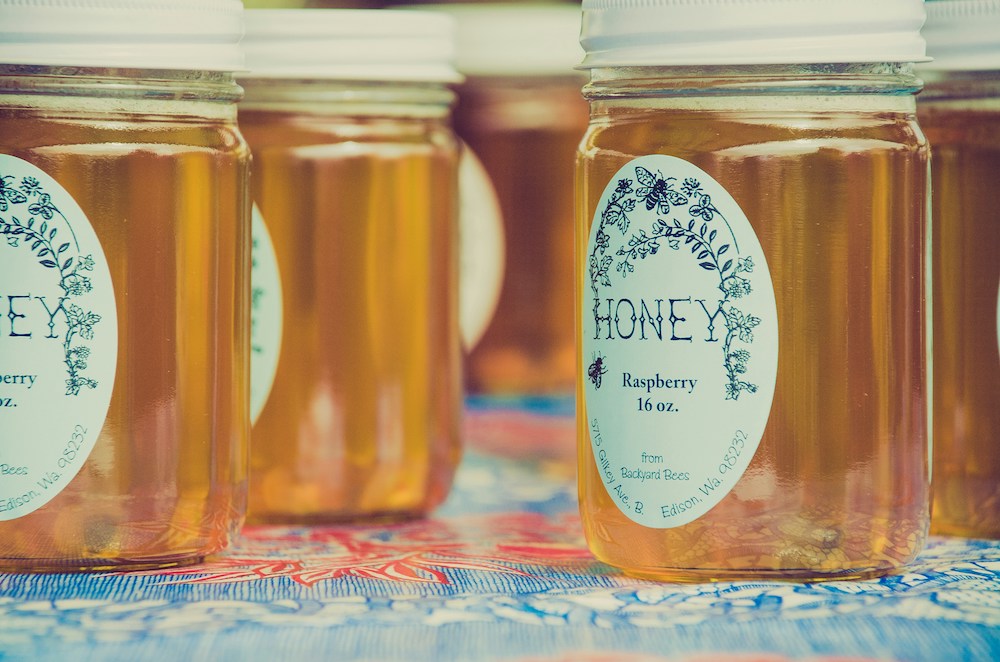When you’re trying to decide which label type to use for your homemade craft beer, food product, or miscellaneous item, it’s easy to get overwhelmed. The world of labeling is actually pretty complex, with multiple options to choose from even before one considers the design, style, size, shape, materials, and colors! To keep things simple, we’re dedicating today’s post to the top three most common types of packaging labels, and the benefits of each.
Pressure-sensitive labels
A pressure-sensitive label is, to put it colloquially, a “sticker” label. The labeling machine, or person, peels the label off its backing and presses it onto the container surface. Pressure-sensitive labels are the most popular type of label, due to their many advantages, including:
- Versatility. Pressure-sensitive labels come in an almost endless array of sizes, shapes, colors, textures, and materials. When it comes to the face stock (the outer-facing part of the label), your creativity is pretty much your only limit. Even the adhesive backing comes in a range of stickiness, so you can choose labels that are water-resistant, water-removable, or somewhere in-between.
- Scalability. Some labeling options aren’t very cost-effective unless they are ordered in massive volumes. This can be a problem for small businesses that are just starting out. Pressure-sensitive labels can be ordered in small or large batches, or even printed as-needed so there is no risk of waste. Pressure-sensitive labeling machines can be quickly scaled up to accommodate larger batches are your business grows.
- Reliability. Pressure-sensitive labels can maintain their integrity in a wide variety of environmental conditions, including heat, cold, and humidity. They can be applied to dirty or contaminated surfaces, too, making them even more cost-effective.
- Sustainability. Pressure-sensitive labels don’t require heat, or exposure to a solvent, in order to work effectively, making the labeling process very eco-friendly and efficient. Since they contain minimal amounts of volatile compounds, they don’t risk contaminating the earth once they are disposed. And since they can be easily removed with a little oil or water, consumers are more likely to reuse the containers they cover, keeping them out of the waste stream entirely.
In-mold labels
If you can’t peel off a label because it’s printed directly onto the product’s package, it’s probably an in-mold label. To make these labels, a pre-printed film is placed into a mold, followed by plastic pellets or resin. When heat is applied, the film merges with the plastic to create a single, labeled container. Some benefits of in-mold labels include:
- Durability. In-mold labels are known for being extremely wear-resistant. They can withstand condensation, which is why you will often find them in the dairy aisle, and will not wear, scratch, peel, or wrinkle, even if the product is heated in a microwave.
- Brand visibility. Unlike a pressure-sensitive label, which only covers a small area, an in-mold label can cover the entire package, including the lid. Additionally, an in-mold labeled container that is washed out and reused will hold your brand image on it forever (think of those Royal Dansk® cookie tins that stowed your grandma’s sewing supplies).
- Sustainability. Since the an in-mold label is applied directly onto the product, it eliminates the need to ship and store blank labels, making the manufacturing process faster and more energy efficient. And, like pressure-sensitive labels, consumers often re-use containers with in-mold labels, which is good for your brand awareness and the earth.
Shrink-sleeve labels
If you’ve ever opened a bottle of lip balm or coffee creamer and accidentally peeled off the entire label, you’ve experienced one of the drawbacks of shrink-sleeve labels. However, shrink-sleeve labels can also offer a lot of benefits, as well. Firstly, and probably most importantly, they incredibly versatile, as they can be conformed perfectly to any container shape. This makes them the ideal choice for unusually shaped containers. This label type is also:
- Visually appealing. Shrink-sleeve labels offer the best of both in-mold labels and pressure-sensitive labels. They are bright, vivid, highly-detailed labels which cover 360° of the container. Shrink-sleeve wrapped products tend to stand out on store shelves, helping boost sales.
- Cost-effective. Shrink sleeve labels are usually more expensive than other types of labels. However, they give businesses that use them a lot of bang for their buck. According to Pack Leader USA, even though shrink sleeves cost about 25% more than pressure-sensitive labels, they provide a 150% increase in label area. Additionally, using a single 360° coverage shrink sleeve can often be cheaper than using two separate labels for the front and back of the package.
- Durable. Shrink sleeves are typically made of polyethylene terephthalate glycol (PETG) or polyvinyl chloride (PVC), both of which are highly durable. Designs are printed on the inside of the shrink material, so it won’t be degraded by moisture or damage.
- Efficient. If your product requires a tamper-evident seal, a shrink-sleeve label can combine labeling and tamper-evident sealing into one efficient process. This is why shrink sleeves are often used on the beauty and pharmaceutical products.
Still need help choosing a label type? Call SSI Packaging
So, which label type should you choose? That will depend entirely on you! If you’ve weighed the pros and cons and still need help making a final decision, call SSI Packaging! Our Richmond-based packaging company has helped countless small business owners get their enterprises off the ground. We’ll be happy to give you the benefit of our experience and expertise, as well! To learn more about our many packaging, shipping, and labeling supplies, check out our product catalog here.

